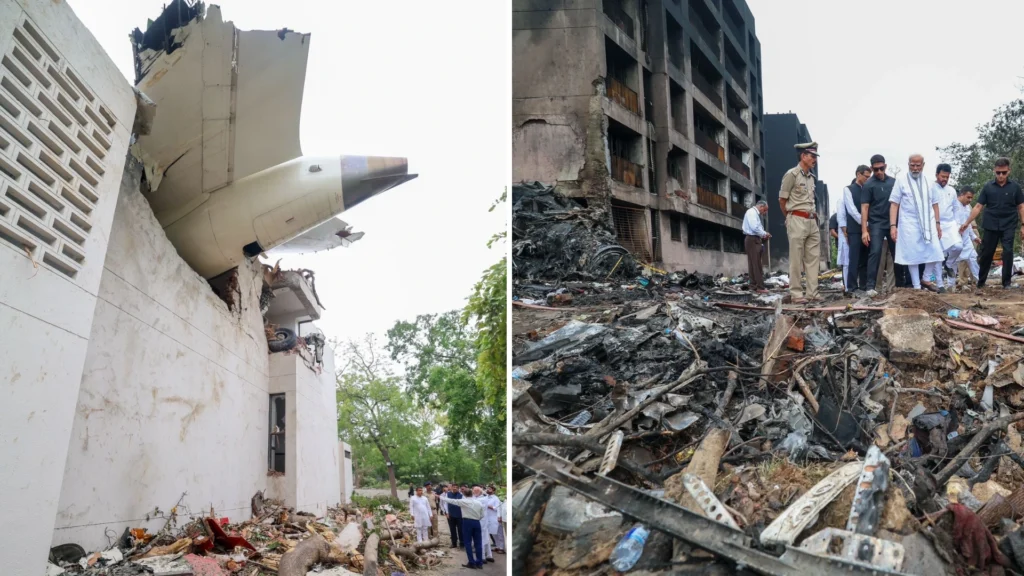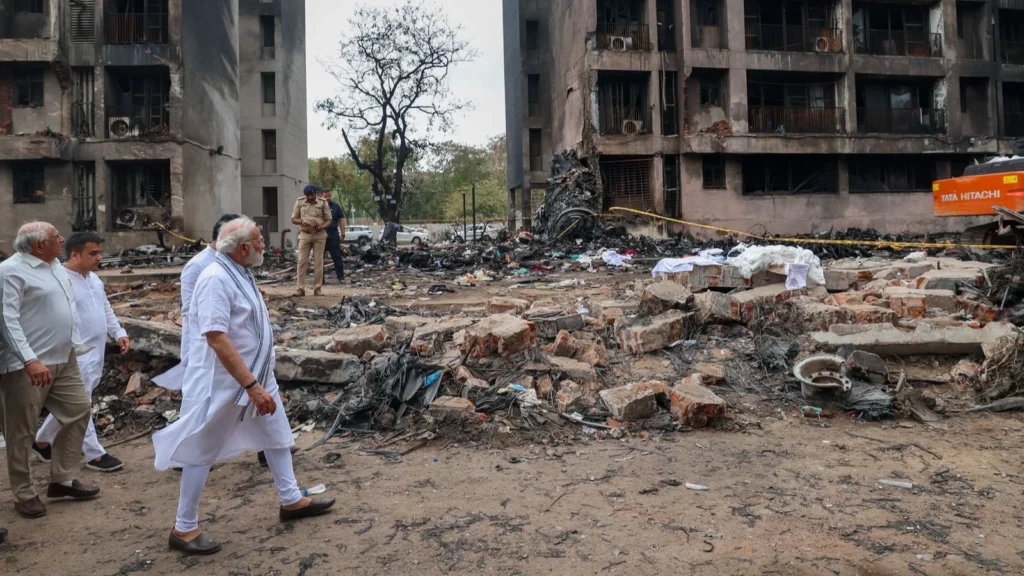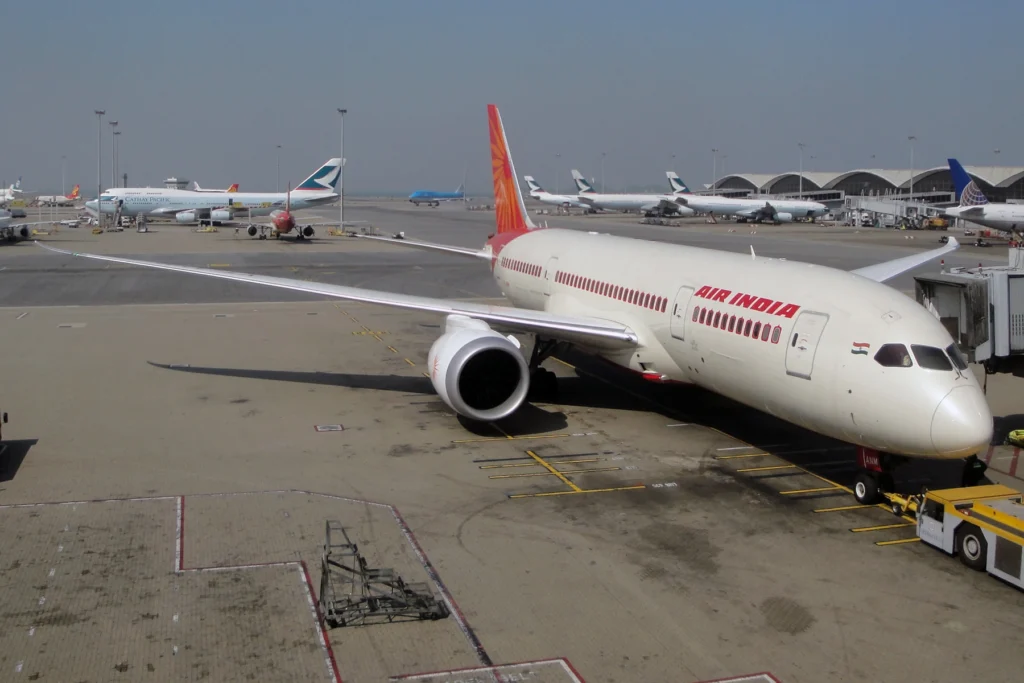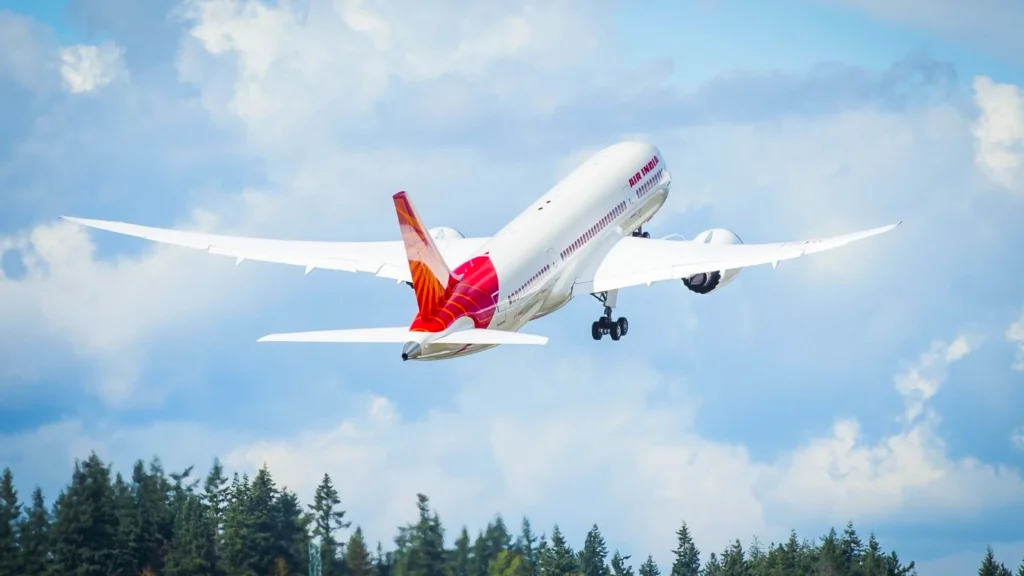
MUMBAI— The Directorate General of Civil Aviation (DGCA), headquartered in India’s capital, is intensifying investigations into the Air India (AI) flight AI171 crash involving a Boeing 787-8 Dreamliner that went down moments after departing from Ahmedabad (AMD), claiming 260 lives.
The preliminary report points to a catastrophic event where the aircraft’s fuel control switches were deliberately turned off, fatally disabling both engines shortly after takeoff.
Emerging details, especially from The Wall Street Journal (WSJ), suggest the probe is now focusing on whether the captain of Air India flight AI171 intentionally caused the crash.
The incident, which took place on a routine flight to London Heathrow (LHR), raises unsettling questions about pilot conduct, mental health, and safety oversight in aviation.
 Photo: PM Narendra Modi X Handle
Photo: PM Narendra Modi X HandleAir India Captain at Center in Crash Probe
According to a WSJ source, the first officer of AI171 was operating the aircraft (pilot flying), while the captain, Sumeet Sabharwal, acted as pilot monitoring.
Critical cockpit voice recordings captured the first officer’s alarmed query to the captain: “Why did you turn off the fuel control switches?” to which the captain calmly denied any such action.
WSJ sources added clarity: the first officer reacted with visible panic, whereas the captain remained composed.
The investigative analysis indicated that the captain was physically capable of accessing the fuel control switches, as the first officer’s hands were occupied with flight controls during the crucial phase of takeoff. This sequence of actions strongly points to deliberate human intervention rather than technical malfunction.
Moreover, the timeline of the incident is particularly chilling. The shutdown of both fuel control switches occurred just seconds after liftoff — a phase of flight where the aircraft is highly vulnerable and lacks the altitude or speed necessary for engine restart or recovery.
If the switches had been disengaged a few seconds earlier on the runway, the takeoff would likely have been aborted safely. Alternatively, if the incident occurred higher up, standard emergency procedures might have allowed for recovery.
The fact that the switches were turned off one second apart — consistent with human reaction time — eliminates the probability of a dual-system failure. Investigators have not found evidence of pre-existing mechanical or technical anomalies before the switches were turned off.
 Photo- X Sources; Compiled by Aviation A2Z
Photo- X Sources; Compiled by Aviation A2ZCaptain Sumeet Sabharwal: A Profile of Contradictions
The captain of the ill-fated AI171, 56-year-old Sumeet Sabharwal, was a seasoned aviator with over 15,000 flight hours. He joined Air India in 1994, earning a reputation for his quiet demeanor and dedication to family, especially his elderly father, a former official in India’s civil aviation ministry.
Sabharwal began his aviation journey at the Indira Gandhi Rashtriya Uran Akademi in the early 1990s, where classmates recalled him as soft-spoken, respectful, and deeply passionate about flying.
However, beneath this calm exterior, recent reports suggest that Sabharwal might have been grappling with mental health struggles.
Following his mother’s death in 2022, he took an extended leave, and some colleagues noticed signs of emotional withdrawal.
Though there are no confirmed medical records indicating depression, speculative accounts suggest he might have been contemplating early retirement to care for his father.
Peers and students who trained under him described him as an exceptional mentor, often better at explaining complex flight systems than official instructors.
Yet, this tragic event has cast a shadow on his legacy, as psychological motives are increasingly being examined as a factor in the crash.
 Photo: PM Narendra Modi X Handle
Photo: PM Narendra Modi X HandleAviation Industry’s Mental Health Blind Spot
This incident underscores a recurring and uncomfortable topic in aviation: the mental well-being of pilots. Historically, pilots avoid disclosing mental health struggles for fear of being declared unfit to fly, resulting in license suspension or permanent grounding.
This punitive system fosters concealment rather than treatment, potentially leading to catastrophic outcomes when underlying issues remain unaddressed.
Notably, this is not the first time the aviation world has confronted suspicions of pilot suicide or intentional crashes. The 2015 Germanwings Flight 9525 tragedy, where the co-pilot deliberately crashed an Airbus A320 into the French Alps, killing 150 people, remains a grim reminder of the worst-case scenario when pilot mental health is neglected.
Regulatory agencies like the DGCA, the International Civil Aviation Organization (ICAO), and the International Air Transport Association (IATA) have long debated introducing confidential mental health reporting systems for pilots.
Despite discussions, meaningful policy changes remain limited, particularly in countries where mental health resources for pilots are scarce or stigmatized.
 Photo: By Kambui – Air India Boeing 787-8 Dreamliner VT-ANM, CC BY 2.0, https://commons.wikimedia.org/w/index.php?curid=58290529
Photo: By Kambui – Air India Boeing 787-8 Dreamliner VT-ANM, CC BY 2.0, https://commons.wikimedia.org/w/index.php?curid=58290529Next Steps in the AI171 Crash Investigation
The DGCA, alongside the Aircraft Accident Investigation Bureau (AAIB) of India, is continuing its in-depth investigation. The final accident report, which typically takes a year or longer to compile, will confirm whether the act was intentional or if any procedural lapses contributed to the tragedy.
International aviation watchdogs, including the U.S. Federal Aviation Administration (FAA) and the European Union Aviation Safety Agency (EASA), are also monitoring the case, given the implications for global aviation safety. If intent is established, it may prompt regulatory reforms around pilot psychological assessments and in-cockpit monitoring.
Meanwhile, Air India (AI) and the Ministry of Civil Aviation have pledged full cooperation with investigators. The airline has also initiated internal reviews of its pilot health monitoring protocols, though specifics have not yet been disclosed.
A Timeline of the AI171 Tragedy
| 12 June 2025 | Air India AI171 crashes shortly after takeoff from Ahmedabad (AMD) en route to London Heathrow (LHR). |
| 12 July 2025 | Preliminary investigation identifies fuel control switches turned off seconds after takeoff. |
| 17 July 2025 | Wall Street Journal reports suggest captain as the individual who switched off the controls. |
| Mid 2025 | DGCA launches a comprehensive mental health and procedural probe into Air India cockpit protocols. |
| Expected 2026 | Final crash report from AAIB and DGCA anticipated. |
Industry-Wide Repercussions and Safety Measures
If conclusive evidence confirms deliberate sabotage by the captain, aviation authorities worldwide may be pressured to revise cockpit monitoring practices. Potential interventions could include:
- Real-Time Cockpit Surveillance: Expanding real-time cockpit monitoring technologies to flag suspicious behaviors.
- Mandatory Psychological Evaluations: Introducing periodic mental health screenings for pilots without punitive consequences.
- Peer Support Programs: Establishing confidential support networks for pilots experiencing psychological distress.
Such reforms would echo the post-Germanwings changes in Europe, but the global application remains fragmented. India, in particular, faces the challenge of balancing pilot privacy with public safety imperatives.
 Photo: Boeing
Photo: BoeingConclusion
The Air India AI171 crash investigation continues to grip the aviation sector, focusing on the troubling possibility of intentional sabotage by a trusted captain.
While the final report is awaited, the incident spotlights critical gaps in mental health management for pilots and the need for systemic reforms to safeguard lives in the skies.
Stay tuned with us. Further, follow us on social media for the latest updates.
Join us on Telegram Group for the Latest Aviation Updates. Subsequently, follow us on Google News
London Couple Who Lost Pilot Son in France Crash Die in Air India Crash
The post Air India Captain at Centre in Boeing 787 Crash Probe appeared first on Aviation A2Z.

















